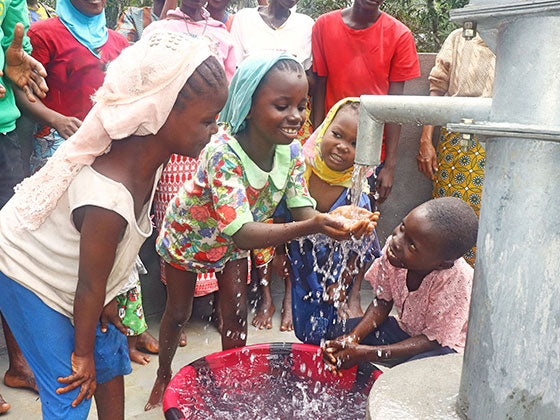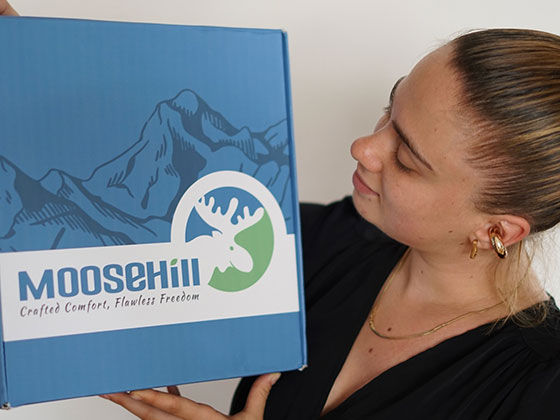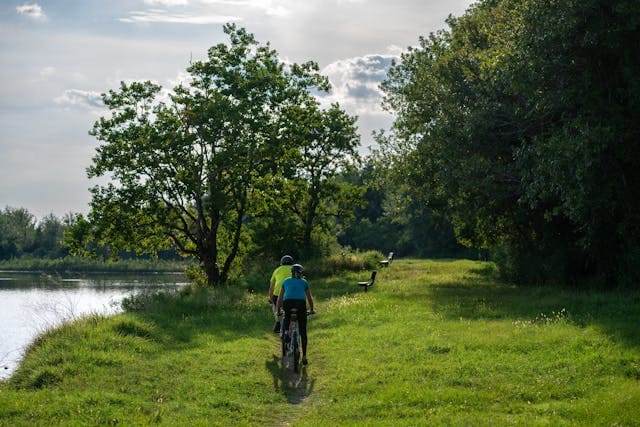Viele Radsportbegeisterte haben während ihrer Fahrten Krämpfe erlebt, die wissenschaftlich als Muskelkrämpfe bekannt sind. Muskelkrämpfe beziehen sich auf das plötzliche und unwillkürliche Versteifen und Zusammenziehen der Muskeln, was zu Muskelsteifheit und unerträglichen Schmerzen führt. Bei Radfahrern treten Krämpfe meist in den Beinen, Händen, im Rücken und Nacken auf. Bei intensiven Wettkämpfen ist es, sobald Krämpfe auftreten, schwierig, sich in kurzer Zeit zu erholen, und Ihre sportliche Leistung wird stark beeinträchtigt. Der wahre Mechanismus der Krämpfe ist derzeit nicht abschließend geklärt, aber wir wissen, dass unter bestimmten Bedingungen Krämpfe tatsächlich wahrscheinlicher auftreten.
Müdigkeit und Überlastung
Der Zyklus von Muskelkontraktion und -entspannung ist die Grundlage unseres Trainings. Wenn unser Körper extrem ermüdet ist und unsere Muskeln über ihre Grenzen hinaus arbeiten, treten oft plötzlich Krämpfe auf, die zum sprichwörtlichen "Tropfen, der das Fass zum Überlaufen bringt" werden. Am Beispiel des Radfahrens: Wenn Sie lange nicht trainiert haben und plötzlich an einem Tag an einem hochintensiven Rennen teilnehmen, sind Sie sehr ehrgeizig zu gewinnen und können Krämpfe bekommen, weil die Intensität der Übung die Grenze Ihrer Muskeln überschritten hat. Ein weiterer Grund ist, dass bei hochintensivem Training Schrott wie ich schnell in die Laktatzone gezwungen wird. Als starke organische Säure dissoziiert Laktat und produziert Wasserstoffionen, was zu einem Abfall des Muskel-pH-Werts führt. Die Ansammlung von Wasserstoffionen kann die Bindung von Calciumionen an Troponin stören, wodurch die Muskelkontraktion und -entspannung beeinträchtigt wird und Muskelkrämpfe entstehen.
Wasser und Elektrolyte
Der menschliche Körper neigt auch zu Krämpfen bei Dehydration. Wasser ist das Transportmittel des Körpers, und die Erregbarkeit der menschlichen Nerven steht in engem Zusammenhang mit dem Gleichgewicht von Wasser und Elektrolyten im Körper. Elektrolyte spielen eine Schlüsselrolle bei der Signalübertragung der Muskeln. Beim Radfahren mit hoher Intensität gehen im Körper große Mengen Wasser und Elektrolyte verloren, was die Übertragung der Muskel-Nervensignale beeinträchtigt und während oder nach dem Training zu anhaltenden Muskelkrämpfen führt. Darüber hinaus kann Dehydration dein Ermüdungsniveau verschlechtern, besonders wenn deine Nerven während eines Rennens stark angespannt sind, sodass du vergisst, ausreichend zu trinken. Wenn du am Ende des Rennens oder am sogenannten „Todespunkt“ sprintest, werden dir die erschöpften Muskeln eine Lektion erteilen.
Schäden und Fahrradeinstellungen
Wenn Sie häufig Krämpfe haben, sollten Sie überlegen, ob es mögliche Schäden an Ihrem Körper gibt. Zum Beispiel kann eine Verstauchung des Knöchels die Bewegungsfreiheit des Gelenks einschränken, wodurch Ihre Waden anfälliger für Krämpfe werden, und Rückenverletzungen können ebenfalls Beinkrämpfe verursachen. Wenn Sie ähnliche Situationen erleben, wird empfohlen, eine reguläre Klinik zur Untersuchung aufzusuchen und kein Risiko einzugehen.
Unangemessene Fahrradeinstellungen und Fahrhaltung sind ebenfalls Ursachen für Krämpfe, wie zum Beispiel eine zu niedrige (oder zu hohe) Sitzpolsterhöhe, Unfähigkeit, Muskeln und Gelenke beim Treten zu dehnen (oder übermäßiges Dehnen), eingeschränkte Durchblutung in den Beinen sowie ein falscher Verriegelungswinkel und eine falsche Position, die ebenfalls zu Krämpfen führen können. Daher kann es auch helfen, einen erfahrenen Fachmann zu finden, der Ihren Puls überprüft, um Krämpfe vorzubeugen und zu lindern.
Jetzt, da Sie die Faktoren kennen, die Krämpfe verursachen können, lernen wir, wie man Krämpfe verhindert und was zu tun ist, wenn sie auftreten.
Niemand möchte fünfhundert Meter vor der Ziellinie Krämpfe bekommen. Wenn es leider passiert, wird selbst wenn man die Zähne zusammenbeißt und durchhält, die Pedalkraft und der Rhythmus beeinträchtigt, daher ist Vorbeugung der Schlüssel.
Seien Sie vorbereitet und denken Sie daran, sich vor der Abfahrt aufzuwärmen. Machen Sie einige Dehnübungen, um Ihre Muskeln zu dehnen. Einige funktionale Beinlinge und Socken werden auch mit der Wirkung beworben, Krämpfe zu verhindern.
Rechtzeitige Auffüllung von Wasser und Elektrolyten. Es gibt viele gute Sportgetränke, Tabletten und Pulver auf dem Markt, die einen Versuch wert sind. Gut abgestimmte isotonische Sportgetränke enthalten Kohlenhydrate und Elektrolyte, die leicht aufgenommen werden können und helfen, das Flüssigkeitsgleichgewicht aufrechtzuerhalten. Wenn Sie während des Trainings Durst verspüren und bereits dehydriert sind, wird empfohlen, Wasser in kleinen Mengen mehrfach nachzufüllen. Natürlich hängt dies auch vom Renntempo ab. Erfahrene Fahrer nutzen die passende Zeit zur Wasseraufnahme, und es gibt auch Beispiele von unerfahrenen Fahrern, die während des Rennens sehr nervös sind und sich nicht trauen, während des gesamten Rennens nach einer Wasserflasche zu greifen.
Eine moderate Aufnahme von Energie kann helfen, eine gute Muskelfunktion aufrechtzuerhalten und die Erholung nach dem Training zu unterstützen. Hier sollte eine Werbung für das Meiqiyigou Energy Gel sein (zum Öffnen klicken). Sportexperten empfehlen, während des Trainings 30-60 Gramm Kohlenhydrate pro Stunde zu konsumieren. Unter Berücksichtigung von Faktoren wie Schweißrate, Wetterbedingungen, Trainingsintensität und Kleidung verliert der menschliche Körper 500-1000 ml Körperflüssigkeit pro Stunde. Obwohl wir möglicherweise kein wissenschaftliches Training wie Profisportler erreichen können, sollten wir auch darauf achten, unseren eigenen körperlichen Zustand zu verstehen. Diese Details sind oft der Schlüssel zum Gewinn von Wettkämpfen.
Ohne Training ist es auch nutzlos, Ihnen einen elektrischen Kleinmotor zu geben. Das langfristige Beharren auf Training kann dazu führen, dass sich Ihre Körperfunktionen so weit wie möglich an Ihre Trainingsbedürfnisse anpassen, was dazu beiträgt, Muskelkrämpfe durch Muskelüberlastung zu verhindern.

Umgang mit Krämpfen
Wenn Sie bereits alles getan haben, was Sie können, aber trotzdem versehentlich den Jackpot geknackt haben, könnten Ihnen die folgenden Tipps hilfreich sein.
Wenn Sie das Gefühl haben, dass Ihre Muskeln anfangen, sich seltsam, wund und steif anzufühlen und ein wenig außer Kontrolle geraten, ist dies ein Vorbote von Muskelkrämpfen. Wenn Sie dies zu diesem Zeitpunkt nicht kontrollieren, wird der folgende starke Schmerz Sie zum Zusammenbruch bringen. Der richtige Ansatz zu diesem Zeitpunkt ist, das Zahnverhältnis leichter einzustellen, die Muskelbelastung zu reduzieren und die Fahrhaltung zu ändern, zum Beispiel vom Sitzen zum Stehen zu wechseln (ohne das Fahrrad heftig zu schütteln), sich auf dem Sitzkissen vor und zurück zu bewegen und eine Haltung zu finden, die Ihre Muskeln entspannt. Wenn Sie sich Ihrer Fahrkontrollfähigkeiten sicher genug sind, können Sie im Auto einige dynamische Dehnübungen machen, die ebenfalls helfen können, Ihre Muskeln zu entspannen, vorausgesetzt, Sie achten auf die Sicherheit!
Wenn Sie das Bedürfnis verspüren, eine Pause einzulegen, denken Sie daran, sich nicht auf den Boden zu setzen, ohne wieder aufzustehen, da diese bequeme Gewohnheit Ihre Muskeln tatsächlich noch mehr verspannen kann. Versuchen Sie, sich an Ort und Stelle zu dehnen, eine Weile hin und her zu gehen und langsam einige Elektrolytgetränke zu trinken. Die Symptome von Krämpfen werden allmählich nachlassen.
Wenn du beim Fahren mit einer Gruppe von Freunden Krämpfe bekommst, solltest du die Situation nicht aus Eitelkeit verbergen. Eine rechtzeitige Behandlung kann die Schmerzen minimieren. Ein wahrer guter Freund wird anhalten und auf dich warten, während diejenigen, die den ganzen Tag darüber schreien, keine Hügel beim Freizeitfahren zu erklimmen und ihre Teamkollegen in kritischen Momenten im Stich lassen, gehen lassen solltest.










